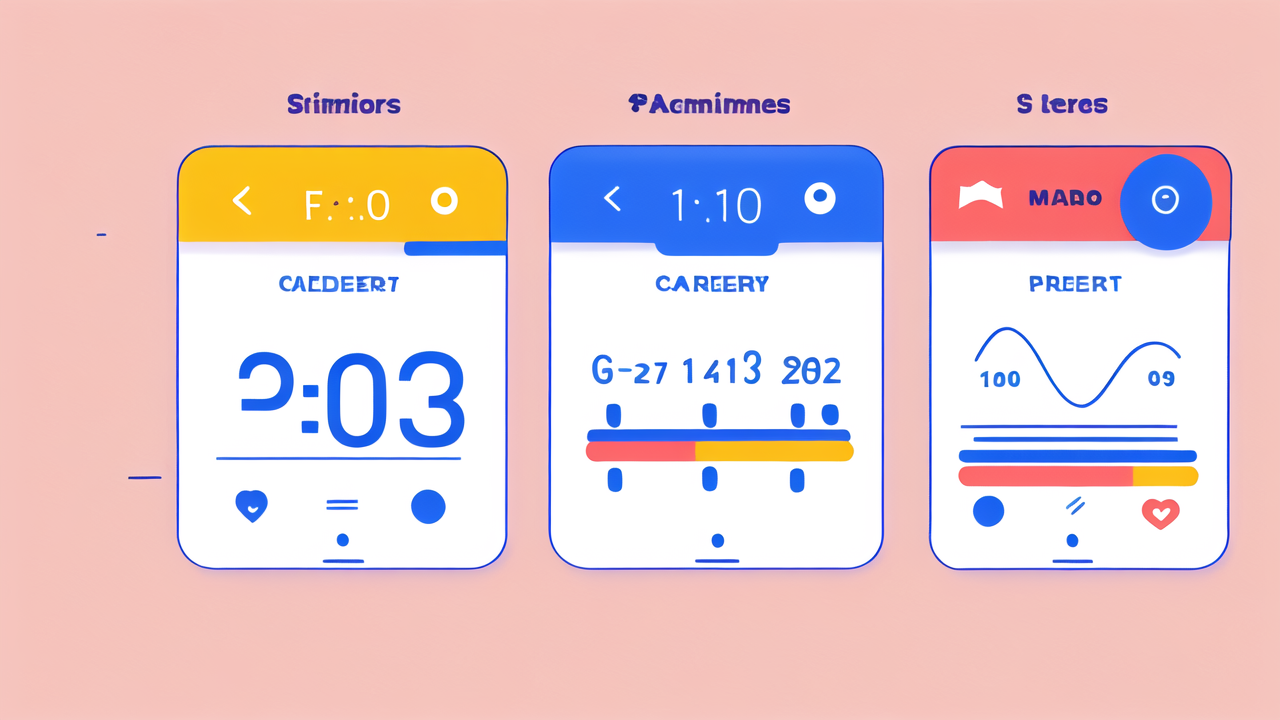Understanding Step Counters: How They Revolutionized Fitness Tracking
The Origins of Step Counters and Their Rise in Popularity
Step counters have come a long way since their inception. They started as simple pedometers in the 1960s. These early devices used mechanical sensors to count steps. They were basic but effective.

As technology advanced, so did step counters. The 1990s saw the introduction of digital pedometers. These were more accurate and could store data. But the real revolution came with smartphones and wearables.
The rise of smartphones with built-in accelerometers made step counting accessible to everyone. Apps could now track steps without extra hardware. This sparked a fitness tracking boom.
Wearable tech like Fitbit further popularized step counting. These devices offered more features and better accuracy. They also made fitness tracking fun and social.
Today, step counters are everywhere. They're in our phones, watches, and even shoes. They've become a key tool in promoting active lifestyles.
Step Counter Technology: How It Works and Is Changing
Step counters use various technologies to track movement. The most common is the accelerometer. This sensor detects motion in three dimensions. It can tell when you're walking, running, or climbing stairs.
Some devices also use gyroscopes. These help measure orientation and rotation. This improves accuracy, especially for activities like cycling.
GPS is another technology used in advanced step counters. It tracks your location and can measure distance traveled. This is useful for outdoor activities and route planning.
Machine learning is changing step counter tech. AI algorithms can now recognize different types of movement. This makes step counting more accurate and versatile.
New sensors are also emerging. Some devices can measure heart rate, blood oxygen, and even stress levels. This gives a more complete picture of your health and fitness.
As technology advances, step counters are becoming smarter and more integrated. They're part of a larger ecosystem of health and fitness devices.
Comparing Step Counters with Traditional Fitness Metrics
Step counters offer unique benefits compared to traditional fitness metrics. They provide a simple, easy-to-understand measure of activity. This makes them accessible to people of all fitness levels.
Unlike calorie counting, step counting is straightforward. You don't need to log food or estimate portions. This simplicity encourages consistent use.
Step counters also offer real-time feedback. You can see your progress throughout the day. This immediate feedback can be motivating and help you stay active.
However, step counts don't tell the whole story. They don't measure intensity or other types of exercise. A weightlifting session might not register many steps, but it's still great exercise.
Traditional metrics like heart rate and VO2 max give more detailed fitness data. They're better for measuring cardiovascular health and fitness levels.
The best approach is often to combine step counting with other metrics. This gives a more complete picture of your health and fitness.
Selecting the Right Step Counter for You
Key Features to Look for in a Step Counter
When choosing a step counter, accuracy is crucial. Look for devices with good reviews for step counting precision. Some use advanced algorithms to filter out false steps.

Battery life is another important factor. Some devices need daily charging, while others can last weeks. Consider your lifestyle and charging habits.
Water resistance is useful if you're active outdoors or want to track swimming. Check the IP rating to see how water-resistant a device is.
Consider the display. Some step counters have large, easy-to-read screens. Others are more discreet. Think about what suits your style and needs.
Compatibility with your smartphone is key. Make sure the device works with your phone's operating system. Check if it syncs data automatically or needs manual input.
Extra features can be nice but aren't always necessary. Heart rate monitoring, GPS, and sleep tracking are common add-ons. Decide which features are must-haves for you.
Top-Rated Step Counters and Smart Watches in the Market
Fitbit Charge 5 is a popular choice. It offers accurate step counting and a range of health features. Its sleek design and long battery life make it user-friendly.
Apple Watch Series 7 is great for iPhone users. It's more than just a step counter. It offers comprehensive health tracking and smartwatch features.
Garmin Vivosmart 4 is known for its accuracy and long battery life. It's slim and comfortable, making it great for all-day wear.
Samsung Galaxy Watch 4 is a good option for Android users. It combines step counting with advanced health metrics and smartwatch functionality.
Xiaomi Mi Band 6 is a budget-friendly choice. It offers good step counting accuracy and basic health tracking. Its long battery life is a plus.
These devices offer different features at various price points. Choose one that fits your needs and budget.
Personalizing Your Fitness Goals with a Step Counter
Setting realistic goals is key when using a step counter. Start with the default 10,000 steps a day. Adjust this based on your current activity level and health status.
Use your step counter's app to set personal goals. Many apps let you set daily, weekly, or monthly targets. This can help you gradually increase your activity.
Don't just focus on step count. Look at other metrics like active minutes or distance traveled. These give a more rounded view of your activity.
Use your step counter to track progress over time. Many apps show trends and averages. This can help you see improvements and stay motivated.
Consider setting non-step goals too. You might aim for a certain number of active hours per day. Or try to increase your average daily step count each week.
Remember, fitness is personal. Your goals should reflect your individual needs and lifestyle. Use your step counter as a tool to support your unique fitness journey.
Implementing Step Counters in Your Fitness Regime
Integrating Step Counters with Other Fitness Equipment
Step counters can work well with other fitness gear. Many devices sync with gym equipment like treadmills or ellipticals. This gives you a more complete picture of your workout.

Use your step counter alongside heart rate monitors. This combo helps track both activity and intensity. It's great for more structured workouts.
Some step counters integrate with smart scales. This lets you track weight and body composition alongside activity. It's useful for weight loss or muscle gain goals.
Consider using your step counter with fitness apps. Many popular apps like MyFitnessPal can sync with step counters. This helps you balance activity with nutrition.
For runners, step counters can work with running apps. They can track your routes, pace, and distance. This data can help improve your running performance.
Remember, integration isn't always automatic. Check your device's compatibility with other equipment and apps.
Step Counter Strategies for Maintaining Health and Wellness
Use your step counter to build healthy habits. Set reminders to move every hour. This helps break up long periods of sitting.
Try to increase your daily average step count gradually. Aim for a 10% increase each week. This steady progress helps build sustainable habits.
Use your step counter to explore your area. Set distance goals and discover new walking routes. This makes fitness more enjoyable and adventurous.
Engage in step-counting challenges with friends or colleagues. Many apps have social features. Friendly competition can be a great motivator.
Don't ignore other aspects of health. Use your step counter alongside good sleep habits and a balanced diet. This holistic approach supports overall wellness.
Remember, steps are just one measure of health. Balance step goals with other types of exercise and rest days.
Advanced Tips for Maximizing the Benefits of Step Counters
Look beyond daily step counts. Analyze your weekly and monthly trends. This gives you a better long-term view of your activity levels.
Use your step counter's sleep tracking features if available. Good sleep is crucial for overall health and can affect your daily activity.
Explore advanced metrics like VO2 max or heart rate variability. These can give deeper insights into your fitness level.
Try interval walking. Alternate between fast and slow walking. This can improve cardiovascular health more than steady-paced walking.
Use your step counter to track non-walking activities. Many devices can recognize cycling, swimming, or other exercises.
Don't get obsessed with numbers. Use your step counter as a guide, not a strict rule. Listen to your body and adjust your activity as needed.
Remember, the goal is overall health and well-being. Step counting is a tool to help you achieve that, not an end in itself.




Leave a comment
This site is protected by hCaptcha and the hCaptcha Privacy Policy and Terms of Service apply.